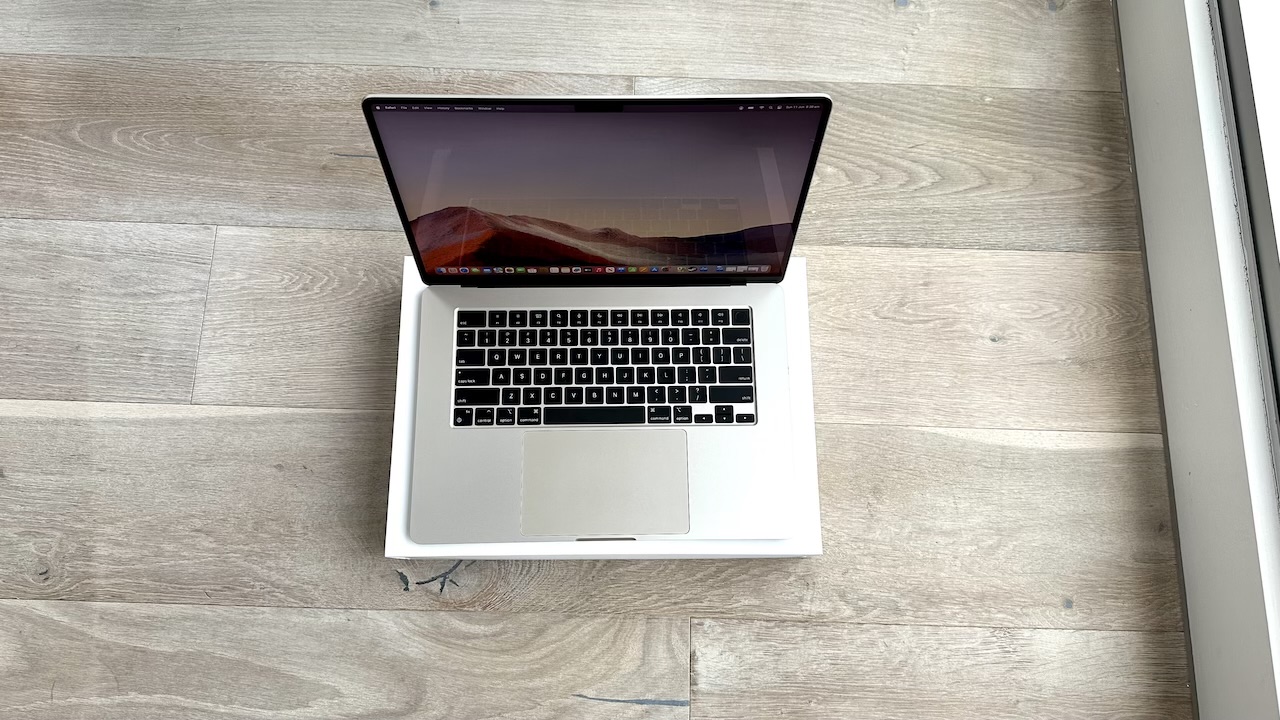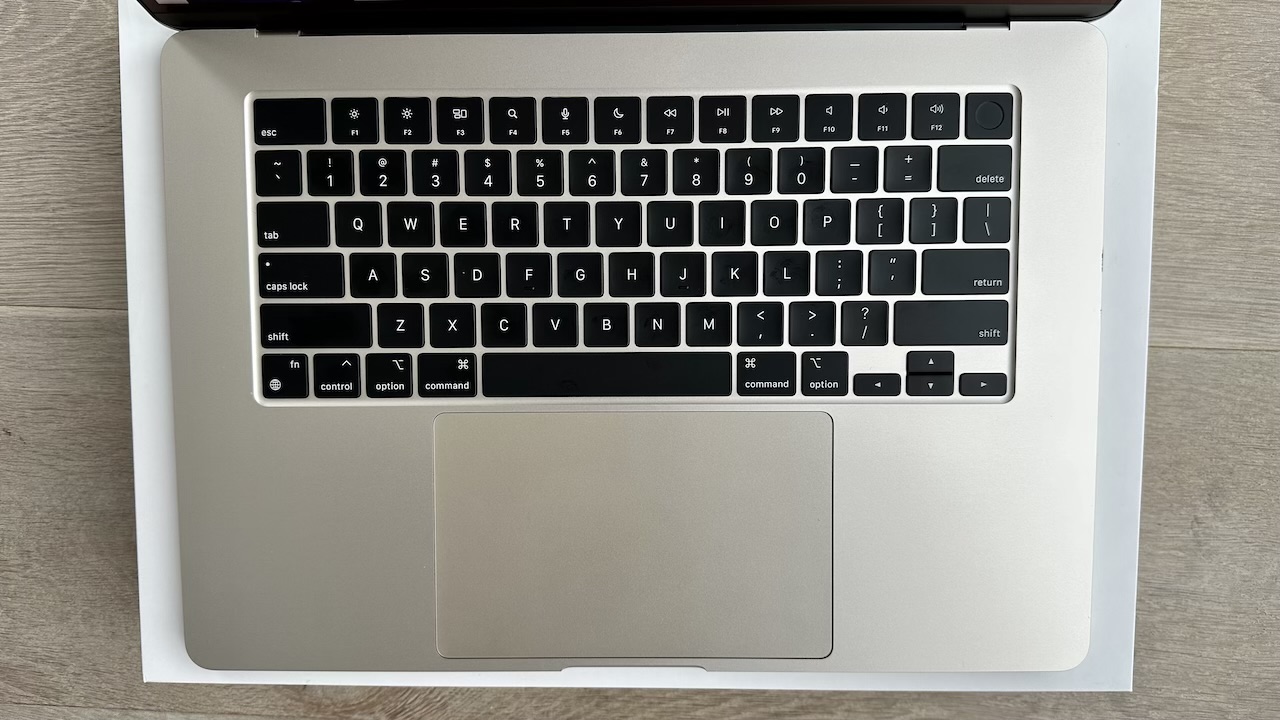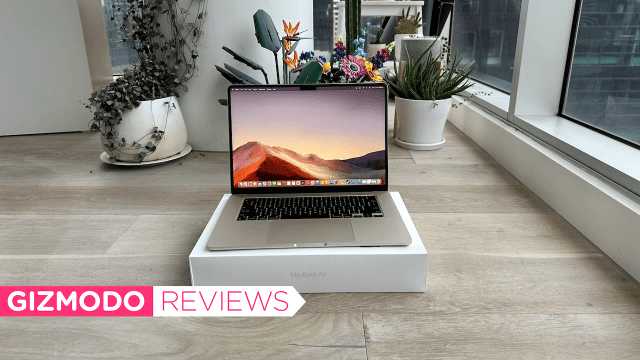Last week at Apple’s Worldwide Developers’ Conference (WWDC), the company announced approximately eleventeen billion thousand things. There were operating system updates, a whole new operating system, a fancy mixed reality headset that you probably can’t afford, two new Apple Silicon chips (M2 Ultra and R1), and four new computers. Most of the announcements were aimed at developers, pro users, and people with cash to splash. But one device, the 15-inch MacBook Air, seemed firmly aimed at a different audience: people who currently use Windows laptops and are curious about moving to Mac.
The language around the launch was all about how the MacBook Air was the current best-selling laptop (though it was not specified in which market it held that title). But it was also said that 15-inch was the most popular screen size, a size that Apple stopped selling around 2019 when the company moved the MacBook Pro to have a 16-inch screen, hence the move to making a 15-inch MacBook Air.
Before the announcement of the new 15-inch MacBook Air (from $2,199), the cheapest Apple option above 14-inch was the 16-inch MacBook Pro, which is overpowered for most users and starts at $3,999. This marks the first time in the 15 years since the MacBook Air was introduced that the model has been given a screen larger than 13.3-inch.
But, stats and speculation aside, is it any good? We put the 15-inch MacBook Air to the test, and were impressed with what we saw.
15-inch MacBook Air Specs
While the base 13-inch M2 model ($1,799) only ships with the 8-core M2 GPU and a 30W USB-C power adapter, the base $2,199 15-inch model comes with the 10-core GPU and the 35W dual USB-C port power adapter. Those upgrades on the 13-inch take the price to $2,299, but also includes the 512GB SSD, which is $2,499 in the 15-inch, which makes it hard to compare Apples to Apples for the price.
The 15-inch also has six speakers built in instead of the 13-inch’s four, however there aren’t any speaker grille holes, so the speakers still sound like they’re trapped behind a layer of aluminium. Which they are. (But they still sound better than you’d expect.)
Regarding the body and weight, the 15-inch is 2mm taller with the lid shut, 4-ish cm wider and 2-ish cm deeper. It’s also 270g heavier, which is noticeable when you’re comparing them directly but doesn’t really make much difference when carried around in a backpack.
Aside from that, the 15-inch MacBook Air is just the 13-inch, if the 13-inch had a growth spurt. My entire note from the keynote announcement of the 15-inch MacBook Air is “like the little one, but bigger” and, really, that’s the key takeaway.
15-inch MacBook Air general performance

The M2 is the little chip that could. Tech reviewers have been writing love letters to Apple Silicon since the M1 was introduced in 2020. It’s the most powerful laptop processor there is in this price range by a long shot. It’s also got a fan-less design, so it’s thin, light, and won’t sound like a plane trying to take off if you open too many tabs.
With the exception of running very intense professional workflows, or trying to play The Sims 4 with every expansion pack turned on at the same time for more than four hours, I haven’t found anything the M2 MacBook Air struggles with. Editing short videos in Final Cut Pro, or recording a song with 10 tracks in Logic Pro doesn’t cause any problems. I probably wouldn’t frequently try to render full feature-length movies on there if that was something I had to do often. But it’s more than capable of handling the 80-plus Safari tabs that I’ll definitely get around to reading one day.
In terms of benchmarking, on Geekbench the M2 CPU got a 2660 single-core score and a 10119 multi-core score
From a Mac perspective that, unsurprisingly, puts it on par with the M2 13-inch MacBook Air and regular M2 13-inch MacBook Pro. Surprisingly, that puts it slightly above the 3.2GHz 16-core Intel Xeon 2019 Mac Pro, which got a 9865 multi-core score.
Looking at PCs, that’s around the same single-core score as an AMD Ryzen 9 7945HX, or an Intel Core i9-13900. On multi-core that’s around a slightly older Intel Core i9-9940X, an Intel Xeon W-2295 and an AMD Ryzen 7 5800X. The closest 13th gen Intel is a Core i5-13600 2.7GHz 14 core model (the M2 is 8 core) with a multi-core score of 12209.
The GPU got a 27729 OpenCL benchmark score, which is around a Nvidia GeForce GTX 980 (27792) or Nvidia GeForce GTX 1060 (27830). That’s not exactly going to thrill people who perform a lot of graphics-heavy tasks, but it’s pretty damn impressive for integrated graphics in an ultra-portable laptop.
Basically, it’ll do pretty much everything an average user would need to do, and then some, without getting too hot or slow, and while staying pretty.
15-inch MacBook Air inputs
The 15-inch MacBook Air, like the 13-inch model, features two USB-C ports and a MagSafe port on the left side, and a single 3.5mm jack on the right. While this is sub-optimal, it does give me the opportunity to rant about how much I hate user-unfriendly minimalist design.
In 2015 former Apple chief design officer Jony Ive declared that the USB-A port was dead, and from that point on Apple laptops would only have USB-C ports (I’m paraphrasing).
Unfortunately for Apple and Apple users, the USB-A port has stubbornly remained alive in the intervening eight years. USB keys are still most commonly USB-A, a lot of external hard drives are USB-A, most accessory charging cables I get are still USB-A (though that trend is finally starting to change).
While it made sense for Apple, a company that sells Bluetooth headphones and allows users to purchase movies and TV shows through the iTunes store, to kill off the 3.5mm headphone jack on phones and the disc drive on computers, it doesn’t sell USB keys or external hard drives. Is it to try and push people to pay for extra iCloud storage? Or is that too cynical, and it’s just that Ive made the wrong call and now the company doesn’t want to appear to admit it was wrong? Probably a bit of both.
That said, while it is incredibly irritating and petty of Apple to keep up this charade of USB-A being dead, it’s actually pretty rare that I find myself needing to plug anything into my MacBook Air. Is that because I’ve trained myself out of the habit? Or because I did stump up and start paying for extra iCloud storage? Who can say.
On the bright side, at least there is still a 3.5mm headphone jack, and the MagSafe port remains one of the best Apple innovations, and I’m so glad it’s back.
Migrating from PC to Mac

If you already have a Mac, then you can probably guess what the M2 MacBook Air is like: It’s like your old one, but probably a bit faster (unless you’re moving from a recent Apple Silicon MacBook/MacBook Pro).
But, if you’re curious about what it’s like to move to Mac from a PC, it’s actually a pretty easy experience.
When you boot up a new Mac, it’ll open to the Migration Assistant. From the Migration Assistant, you can choose to set it up from another Mac (where users, settings, files and programs will move over) or from a PC (where you can get the account name and documents to move over). You just connect the Mac and PC with a USB-C cable and, depending on how many files you have, it’ll take about an hour.
Because the Windows programs are not compatible on Mac, you’ll need to re-download all your software, but that’s a pretty quick process depending on how much you have to download and how good your internet is.
If you’re not super tech savvy, or you’re a bit nervous to move to Mac from PC and want some pointers, if you buy your MacBook Air from an Apple Store and bring your old laptop with you, one of the people from the Genius Bar can do the transfer for you. You also have the option of signing up for a one hour one-on-one online session with someone from Apple to teach you tips and tricks about how to use your Mac. There are also other how-to classes at the Apple Store. Plus there’s a lot of tips and tricks here and here.
Speaking from experience, I set up this MacBook Air from a Windows laptop and it was super quick and easy. All the common work apps (like Word, Excel, Zoom, Microsoft Teams, Photoshop, Chrome, Slack, etc) are all available on Mac. It’s not as much of a hassle to go between the two operating systems as it used to be.
Gaming
Trying to play games on a small and light Windows laptop is like trying to play games on a potato. It can be graphically reminiscent of the time that person got Doom to run on a pregnancy test.
On the M2 MacBook Air, games that run on Mac look great. I’ve played an unhealthy amount of The Sims 4 on the 13-inch MacBook Air, and certainly more than I should have on deadline on the 15-inch, and it runs smoothly with above-average graphics settings.
The one thing holding back gaming on Mac is the lack of games (though, there is a concerted effort to fix that, as announced at WWDC). Stray and Death Stranding are coming later in the year. But, for now, there’s Turnip Boy Commits Tax Evasion available in the App Store for $23, a lot of the EA Origin games are compatible, Xbox Game Cloud runs great, and, of course, there’s Apple Arcade and the thousands of iPhone and iPad games that are compatible.
No super serious gamer is going to be buying a MacBook Air as their main gaming device. But people who have to have a Mac for school/work and don’t have the cash for another device and casual gamers will have a good time playing what’s available. For those desperate to play some Fortnite on Mac amidst the Epic Games boycott, it plays super well through Xbox Game Cloud on Mac if you have a good enough internet connection.
15-inch MacBook Air Verdict

The M2 MacBook Air is an absolute beast of a device that’s well-priced, is super portable, and is over-powered for this price and level of portability. If you’ve been wanting a 15-inch Mac and don’t have the $4k to get a MacBook Pro, this is the one to get, not just because it’s the only option, but because it is undeniably excellent.
Yes, the port situation sucks, but that is the only drawback, and it’s one most users probably won’t actually notice too much.
I wholeheartedly recommend the 15-inch MacBook Air, or whichever size of MacBook Air fits your needs best. You can’t go wrong here.
